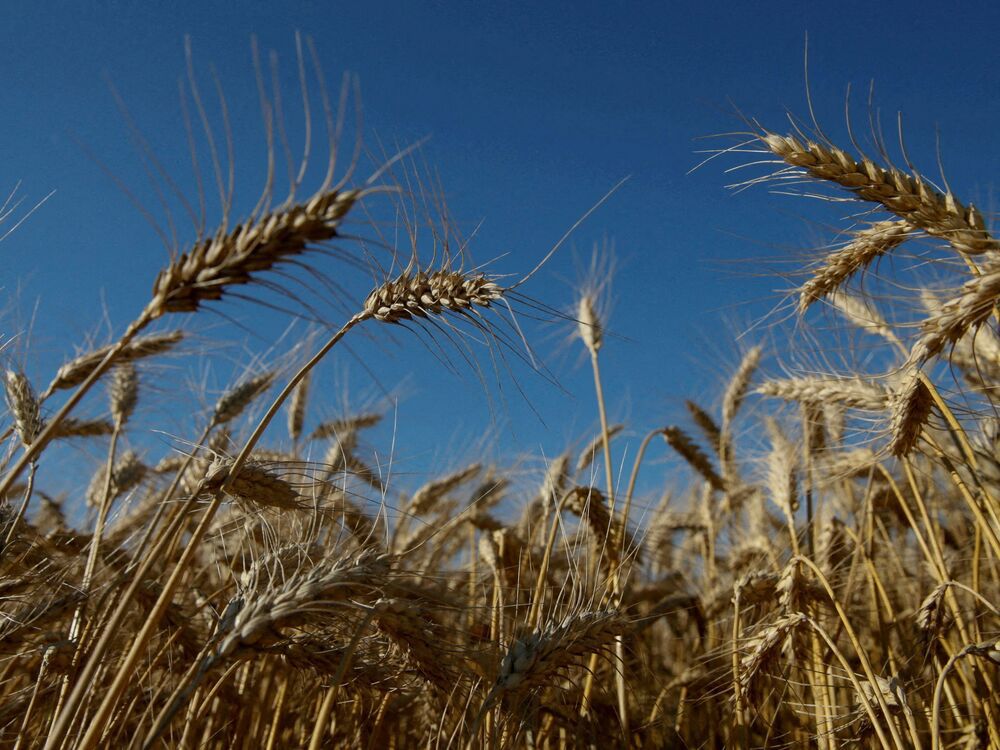Investment vehicles tied to raw materials such as oil and wheat drew in net inflows of US$38.7 billion in the year to May 10
Author of the article:
Financial Times
Adrienne Klasa
Wheat in a field in Ukraine. Agricultural commodity funds have received the most flows this year. Photo by Valentyn Ogirenko/Reuters files Commodity funds are making a comeback after years out of favour, as institutional investors seek hedges against stubbornly high global inflation.
Advertisement 2 This advertisement has not loaded yet, but your article continues below.
Investment vehicles tied to raw materials such as oil and wheat drew in net inflows of US$38.7 billion in the year to May 10, building on weekly inflow highs through March, according to data from Citi.
Commodity prices have soared this year as pandemic supply chain disruptions were compounded by a squeeze on oil and gas supplies over the winter, pushing the broad S&P GSCI index in March to its highest level since 2008.
Prices for grains, cooking oils, energy and fertilizers have all jumped following Russia’s invasion of Ukraine, stoking inflation even further and raising fears of widespread hunger in developing countries.
The wide-ranging S&P GSCI raw materials index has receded from its March peak, but remains up 37 per cent for the year, compared with a fall of 16 per cent for the broad MSCI World share gauge and a decline of eight per cent for an Ice Data Services barometer tracking global high-grade bonds.
Advertisement 3 This advertisement has not loaded yet, but your article continues below.
Agricultural commodity funds have received the most flows this year, according to portfolio managers at DWS Group. Data tracked by Morningstar show both broad-based and sector-specific commodity strategies have taken in US$24.5 billion in net flows this year, with more than 95 per cent going into index funds tracking these goods.
“We have a pretty diversified portfolio at all times, but we’re definitely leaning a bit more into natural resources and commodities, which is a counter to historically what we have done if we see this kind of global growth slowdown,” Evan Rudy, liquid real assets fund manager at DWS, said.
More On This Topic After $5-trillion rout, emerging markets seek turnaround signal Rupture in the stock-bond relationship shows recession angst rising fast David Rosenberg: The crypto market is neither safe nor a haven — and now it’s hurting equities Why the TSX is finally finding some love from investors jilted by U.S. stock markets This advertisement has not loaded yet, but your article continues below.
Article content In a sign of investors’ flight to safety in turbulent markets, the SPDR Gold Shares exchange-traded fund was the commodity strategy to receive the most inflows, drawing in US$7.2 billion. Most commodity funds include gold, which is widely seen as a short-term hedge against inflation.
Commodity prices spent the first 10 years of this century riding high on the back of China’s insatiable demand for resources to fuel its economic growth spurt. After the so-called supercycle ended, commodities were unpopular for several years as investors worried about their volatile prices and often dicey sustainability credentials.
Environmental, social and governance principles were “one of the reasons institutional investors stayed away, but also the volatility is quite extreme. Institutional investors can’t stomach volatility so commodities were very out of favour,” said Amin Rajan, chief executive at think-tank Create Research. “They are a feast or famine prospect.”
Additional reporting by Neil Hume
The Financial Times Ltd.
Financial Post Top Stories Sign up to receive the daily top stories from the Financial Post, a division of Postmedia Network Inc.
By clicking on the sign up button you consent to receive the above newsletter from Postmedia Network Inc. You may unsubscribe any time by clicking on the unsubscribe link at the bottom of our emails. Postmedia Network Inc. | 365 Bloor Street East, Toronto, Ontario, M4W 3L4 | 416-383-2300
